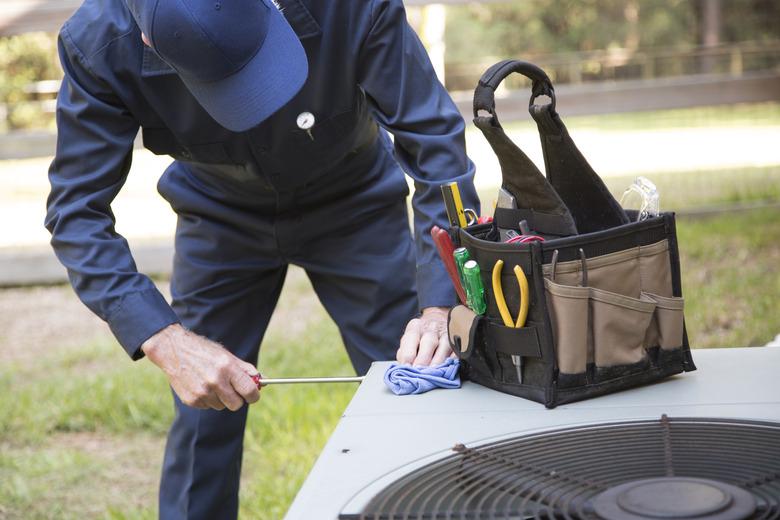4 Chemicals That Ruin Outdoor Air Conditioning Units
Outdoor air conditioning units work most efficiently when cleaned on a regular basis, but some cleaners can actually damage the unit, especially when used to clean the inside of the cabinet or the evaporator and condenser coils. Products that create chemical reactions between the cleaner and the metal and naturally corrosive cleaners harm the surface of the metal and cause the eventual deterioration of parts over extended use. Knowing which cleaners to use and which to avoid helps you clean your exterior HVAC system components properly without causing costly damage.
Tip
Avoid harsh chemicals that can damage your outside air conditioning unit, including ammonia, chlorine, bleach and acid-based solvents. These chemicals can be too hard on your outdoor AC components.
1. Caustic Ammonia Cleaner
Ammonia, a solvent made of hydrogen and nitrogen, exists as a commonly used household cleaner, fertilizer, refrigerant and component of ammonium salts, urea, dyes and plastics. In spite of its many uses, household ammonia has both caustic and hazardous properties. As a caustic substance, ammonia eats away any object it comes into contact with in its liquid state. Ammonia eventually causes air conditioning coils to deteriorate if it's left on the coils for an extended period of time or used frequently.
2. Cleaners With Chlorine
Chlorine, an element of the periodic table, occurs naturally in combined states only. The most common occurrence comes in the form of table salt, a combination of sodium and chlorine. Many uses of chlorine, including salt, have few damaging effects, and chlorine even helps to produce clean water for drinking and swimming. Many consumer products, including dyes, textiles, insecticides, paints, disinfectants and cleaners, use chlorine as well.
Consumption and safety purposes only require small amounts of chlorine, but large amounts can cause damage to humans and machinery alike. Cleaners with high concentrations of chlorine often cause damage to air conditioner coils and should be avoided.
3. Any Type of Bleach
Bleach, a liquid or solid chemical compound, removes color through oxidation. The chemical composition of bleach varies. Some common bleaches include chlorine bleach, made of chlorine, oxygen and sodium, and oxygen bleach, made of hydrogen peroxide. At minimum, bleach will discolor your air conditioner if applied to any part of it. At worst, strong concentrations of bleach will break down and damage coils if used frequently or allowed to sit for extended periods of time.
4. Acid and Alkaline Cleaning Solvents
Metal cleaning solvents specifically remove oils, grease and metal filings from metal parts, but some acid-based and alkaline-based chemical solvents can cause more harm than good when they come into contact with delicate air conditioner parts. Acids and alkalis, or bases, have corrosive properties that damage sensitive components inside the air conditioner, especially the coils.
All acids and alkalis have the capacity to damage equipment during routine AC maintenance if left to sit for an extended period of time. Stronger acids and alkalis have a greater intensity and ruin the coils more quickly. Cleaning products made of strong acids or strong bases should be avoided entirely, while those made of weak acids and bases must be used only in small amounts and for limited spans of time to minimize the possibility of damage.
